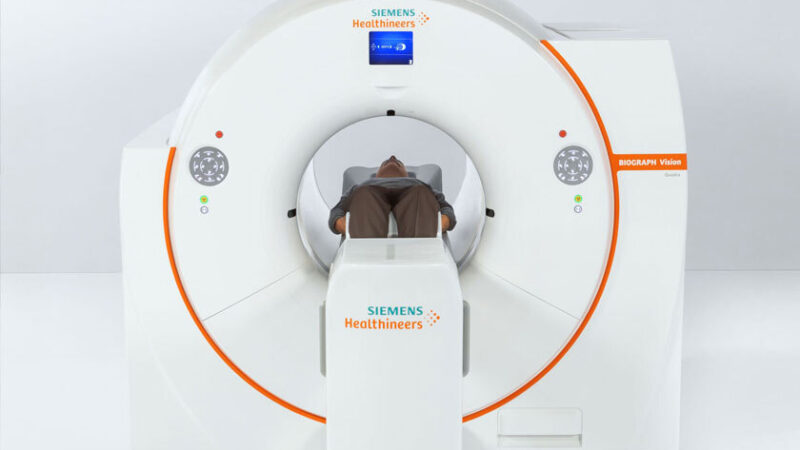The £8 million positron emission tomography (PET) scanner, funded by the Royal Free Charity, is 30 times more powerful than standard machines and will allow scans of the whole body to be completed in a fraction of the time they do currently.
Because the scanner is more sensitive, it means patients will be exposed to less radiation and scans can be completed in a fraction of the time, increasing the speed of diagnoses and allowing life-saving treatments to start sooner.
PET scanners create three dimensional pictures of parts of the body. Patients are given a mildly radioactive glucose solution, which is then absorbed by the part of the body that doctors wish to look at. This radioactive material lights up in the scan, allowing doctors to see how the patient’s tumour or part of the body is functioning.
For patients with cancer, understanding more about how a tumour functions means patients can received more appropriate and effective treatments.
The PET scan is used as part of a suite of diagnostic tools that help doctors determine the best treatment for each patient.
The new PET scanner is called a long axial field of view or LAFOV. It is also known as a total body PET scanner. Because it is 30 times more sensitive than earlier versions, it allows clinicians to take an image in a much shorter length of time.



